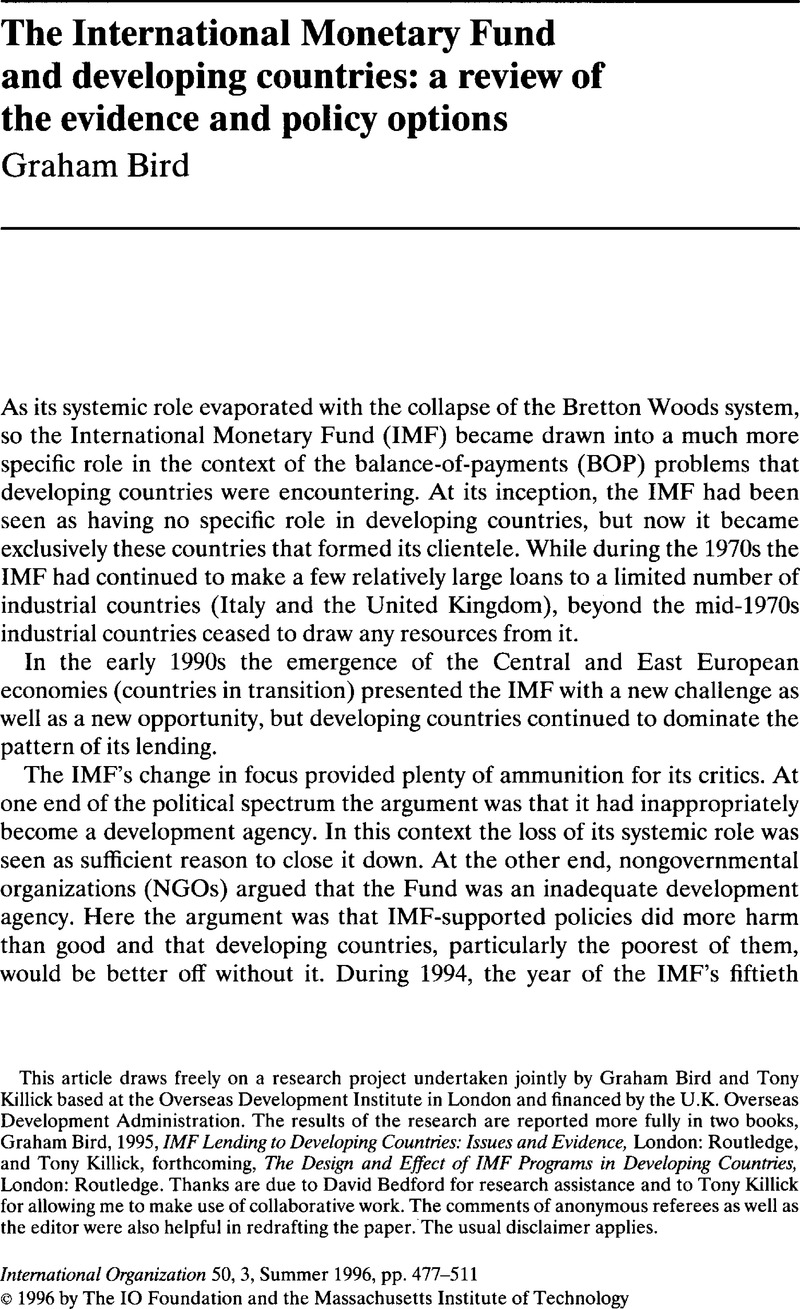Crossref Citations
This article has been cited by the following publications. This list is generated based on data provided by Crossref.
1997.
Ghana une révolution de bon sens.
p.
373.
Thacker, Strom C.
1999.
The High Politics of IMF Lending.
World Politics,
Vol. 52,
Issue. 1,
p.
38.
Harper, R. H. R.
1999.
Social Navigation of Information Space.
p.
80.
Bird, Graham
and
Rowlands, Dane
2000.
The catalyzing role of policy-based lending by the IMF and the World Bank: fact or fiction?.
Journal of International Development,
Vol. 12,
Issue. 7,
p.
951.
HUNTER, WENDY
and
BROWN, DAVID S.
2000.
World Bank Directives, Domestic Interests, and the Politics of Human Capital Investment in Latin America.
Comparative Political Studies,
Vol. 33,
Issue. 1,
p.
113.
Willett, Thomas D.
2000.
Global Financial Crises.
p.
421.
Therborn, Göran
2000.
Globalizations.
International Sociology,
Vol. 15,
Issue. 2,
p.
151.
Bird, Graham
Mori, Antonella
and
Rowlands, Dane
2000.
Do the multilaterals catalyse other capital flows? A case study analysis.
Third World Quarterly,
Vol. 21,
Issue. 3,
p.
483.
Willett, Thomas D.
2000.
Managing financial crises: the experience in East Asia A comment.
Carnegie-Rochester Conference Series on Public Policy,
Vol. 53,
Issue. 1,
p.
69.
Joseph, James W
2000.
Stasis and change in the IMF and World Bank: international context and institutional dynamics.
The Social Science Journal,
Vol. 37,
Issue. 1,
p.
43.
Bird, Graham
2001.
Conducting macroeconomic policy in developing countries: Piece of cake or mission impossible?.
Third World Quarterly,
Vol. 22,
Issue. 1,
p.
37.
Hutchison, Michael M.
2001.
A Cure Worse Than the Disease? Currency Crises and The Output Costs of IMF Supported Stabilization Programs.
SSRN Electronic Journal ,
Bird, Graham
2001.
A suitable case for treatment? Understanding the ongoing debate about the IMF.
Third World Quarterly,
Vol. 22,
Issue. 5,
p.
823.
Bird, Graham
and
Rajan, Ramkishen S.
2001.
Coping with, and cashing in on, international capital volatility.
Journal of International Development,
Vol. 13,
Issue. 1,
p.
1.
Bird, Graham
and
Rowlands, Dane
2002.
Do IMF Programmes Have a Catalytic Effect on Other International Capital Flows?.
Oxford Development Studies,
Vol. 30,
Issue. 3,
p.
229.
Bird, Graham
and
Rowlands, Dane
2003.
Political Economy Influences Within the Life‐Cycle of IMF Programmes.
The World Economy,
Vol. 26,
Issue. 9,
p.
1255.
Vreeland, James Raymond
2003.
The IMF and Economic Development.
Vreeland, James Raymond
2003.
Why Do Governments and the imf Enter into Agreements? Statistically Selected Cases.
International Political Science Review,
Vol. 24,
Issue. 3,
p.
321.
Bird, Graham
and
Rajan, Ramkishen S.
2004.
International Finance and the Developing Economies.
p.
181.
2004.
Globalization and the Nation State.
p.
21.





